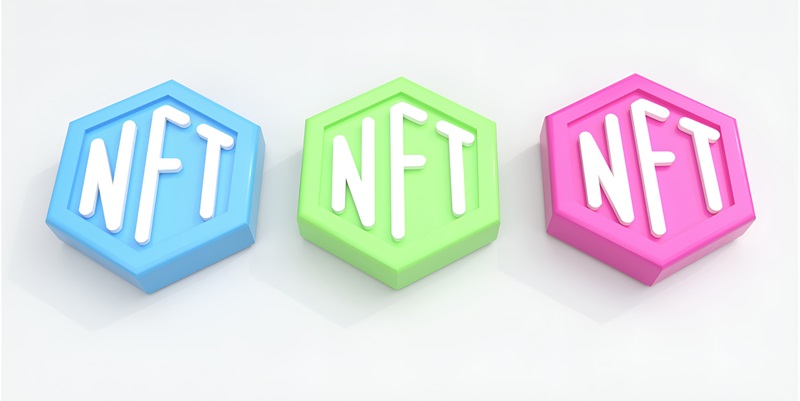The launch of DOTphin, a groundbreaking multi-pass NFT project, represents a significant step forward in the convergence of Web 3.0 technology and environmental sustainability. Spearheaded by the Sovereign Nature Initiative (SNI) in collaboration with Unique Network and WalletConnect, DOTphin embodies Polkadot’s commitment to a greener blockchain ecosystem. This ambitious project is poised to make its official debut at Polkadot Decoded 2024, promising to drive biodiversity restoration through an innovative blend of physical and digital events. Participants will receive avatar-based NFTs that evolve based on their engagement levels, effectively merging ecological responsibility with cutting-edge technology.
DOTphin’s Role in Environmental Sustainability
Fusion of Web 3.0 Technology with Ecological Responsibility
Central to the DOTphin project is its ability to integrate the dynamic possibilities of NFTs with the pressing need for environmental sustainability. Each participant receives an avatar-based NFT that evolves based on engagement, symbolizing a new age of user interaction. Instead of being static collectibles, these NFTs change and grow, encouraging ongoing involvement in environmental conservation initiatives. This fusion of digital assets with real-world actions reflects the project’s unique approach toward fostering a culture of sustainability within the blockchain community.
Participants at the Polkadot Decoded event scheduled for July 11, 2024, are set to receive eco-badges as a precursor to their unique DOTphin NFTs. This initial engagement not only raises awareness but also sets the stage for a deeper commitment to marine conservation and biodiversity restoration. Furthermore, EthCC ticket holders are offered additional incentives, such as Decoded tickets and their first Proof of Attendance Protocol (POAP), which further bolster marine conservation efforts. By making environmental actions directly tied to the rewards and evolution of their NFTs, DOTphin is setting a new standard for how blockchain technology can be harnessed for ecological benefit.
Community Engagement within the Polkadot Ecosystem
One of the hallmarks of the DOTphin initiative is its robust backing by the community, facilitated primarily through Polkadot OpenGov. This platform has become a testament to the collective commitment toward achieving broader environmental goals. The active participation and support from the community underscore the alignment of DOTphin with Polkadot’s overarching mission for sustainability. This decentralized governance model ensures that the project’s direction and execution are continually shaped by eco-conscious users and investors.
The distribution of eco-badges and evolving NFTs isn’t just gimmickry; it serves a greater purpose of fostering a sense of community and collective action. By engaging users in the protection and restoration of our planet, DOTphin creates a tangible connection between blockchain enthusiasts and environmental advocates. This synergy is invaluable as it transcends the limitations of traditional conservation efforts, driving real-world impact through innovative digital means. The result is not only a more engaged community but also one that is increasingly aware of its ecological footprint.
Broader Achievements within the Polkadot Network
Nabatech’s Adoption of Polkadot’s Substrate Framework
Another noteworthy development within the Polkadot ecosystem is Nabatech’s selection of Polkadot’s Substrate framework for its digital asset platform designed for central banks and financial institutions. This decision, following exhaustive assessments of various factors such as security, coding standards, governance, and interoperability, is a testament to Polkadot’s robust infrastructure. Nabatech’s integration of Polkadot’s technology is poised to enhance the reliability and functionality of digital asset management for some of the most critical sectors.
This move marks a significant vote of confidence in Polkadot’s capabilities, especially as the financial industry increasingly looks toward blockchain for greater efficiency and security. By opting for Polkadot’s Substrate, Nabatech showcases the versatility and advanced nature of the network’s framework. This choice is anticipated to pave the way for more financial institutions to explore and adopt blockchain solutions, thereby broadening the reach and applicability of Polkadot’s innovative technology to more traditional sectors.
Introduction of the Joint Accumulation Machine (JAM)
Looking into the future, Polkadot plans to introduce the Joint Accumulation Machine (JAM), which promises to elevate network efficiency and enhance operational functionality. This impending upgrade signifies Polkadot’s unwavering commitment to continuous improvement and expansion. The JAM initiative comes at a critical juncture, reinforcing the network’s dedication to maintaining its competitive edge while catering to an ever-expanding user base that demands reliability, scalability, and sustainability.
The introduction of JAM is set to streamline various processes within the Polkadot network, potentially unlocking new levels of performance and efficiency. As Polkadot continues to evolve, these advancements will likely attract more projects and developers to its ecosystem, thereby fostering innovation and growth. The continuous enhancements made through initiatives like JAM underpin Polkadot’s position as a driving force in the blockchain industry, committed to pushing the boundaries of what decentralized technology can achieve.
The launch of DOTphin, a pioneering multi-pass NFT project, marks a notable advancement in the intersection of Web 3.0 technology and environmental sustainability. Led by the Sovereign Nature Initiative (SNI) in partnership with Unique Network and WalletConnect, DOTphin reflects Polkadot’s dedication to creating a more environmentally friendly blockchain ecosystem. This ambitious initiative is set to make its official premiere at Polkadot Decoded 2024, with the primary aim of promoting biodiversity restoration through a blend of both physical and digital events. Participants in this project will receive dynamic avatar-based NFTs that evolve based on their levels of engagement and interaction.

